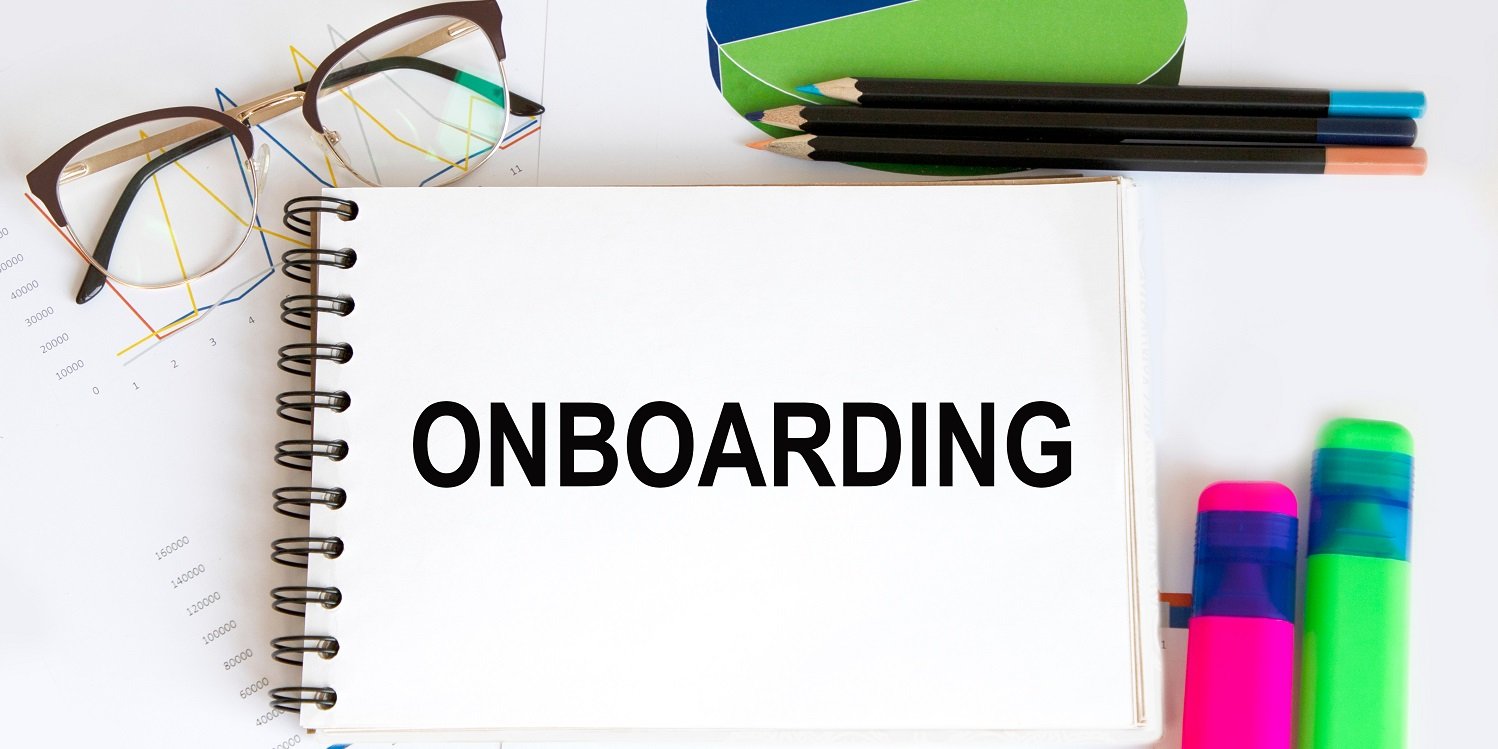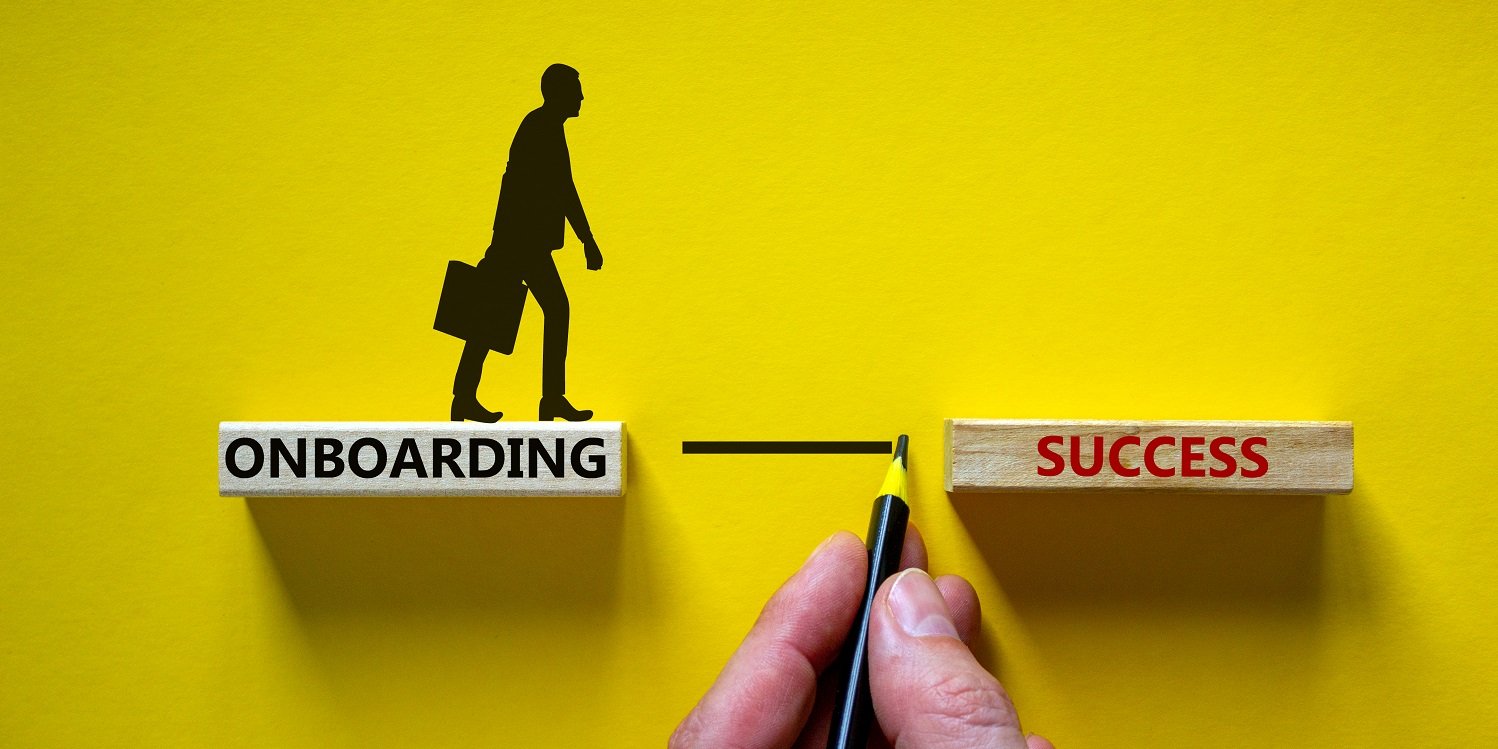What is onboarding, when does it start, and why is effective onboarding important for businesses? HR consultant Kate Marchant of Running HR Ltd tells you what you need to know and how to perfect your onboarding process!
What exactly is onboarding?
Onboarding can be described as the process of integrating a new employee with a company and its culture. It’s also about giving the new starter all the tools and information they need to do their job.
When does employee onboarding start?
Actually, onboarding probably starts during the recruitment process and not necessarily from the day the employee starts. Think about it – the minute you advertise a role you start to give an impression about the company… the language, the tone, and the words you choose all give little clues about the culture of the business.
Then we move to the interview experience – the type of questions asked and overall interview etiquette gives another taste of the values, culture, and employment ‘atmosphere’ within the business. Next up is the offer process – how the offer letter and associated documentation is worded and its general tone all give signs too.
So, by the time the employee starts with a business, and perhaps the more formal employee onboarding process, they may have already got a pretty good flavour of what the company is all about and how it does things.
Learn more: How an Applicant Tracking System (ATS) streamlines recruitment for SMEs
How long should onboarding take?

Opinion can be divided on this aspect, although many believe a truly effective onboarding process should last around 12 months. Obviously, this depends on the onboarding activities and is not just about a set length of time; however, to truly achieve the objective of fully integrating an employee with the business, time needs to be allowed for this.
Onboarding is sometimes confused with orientation or induction. Is there a difference? Yes, there is: orientation/induction is usually a one-time event aimed at welcoming new recruits to a business on their first day(s). As such it is a key component of a longer-term, holistic onboarding programme.
Why is onboarding important?
Ultimately, onboarding can accelerate the integration of a new employee. A fully integrated employee who has had a good onboarding experience is more likely to feel settled in, happy, and productive – and that’s good news for the employer. If they are still trying to get the hang of the company structure and who does what 6 or even 12 months later, then it’s quite possible the employee will be feeling a tad frustrated and may even be tempted to leave. And if that happens, you start the cycle again…
That’s why onboarding is important: it gets a new employee from couch to fully functioning and that means you have a happy employee who is engaged and contributing to the business, as opposed to one who is struggling, likely to jump ship, costing you more money and wasted time in the long run. Not to mention impact on your employer brand.
How to formulate an effective employee onboarding strategy

It’s important for businesses to establish an onboarding strategy that works for them – the following questions are designed to help businesses in determining what this might look like for them:
- What impression do you want to give and at what stage? For example, for the end of the first day, the 1st month, after 3 months, 6 months, and a year?
- What do your employees need to know about your values, expected behaviours, work environment, and culture? What’s the best way to get this across?
- What do new recruits need to know about what you do and in how much detail (role dependant)?
- What are the roles of HR, line managers, senior board members/managers, co-workers, and the new employee? Everyone has a part to play in this; in fact, it’s essential and not just ‘down to HR’. For example, if part of the programme is to arrange 1:1s with Board members, then the Board member needs to commit and show up!
- What goals and objectives will you set for the new employee over the onboarding programme? These can be job related and related specifically to the onboarding programme.
- When does onboarding start and end?
- What does successful onboarding look like – think about what you what to see at the end of the programme.
Learn more: Company culture: how to create, communicate and improve it
Getting it right from day one
Answering the above questions will help shape the longer onboarding strategy – but what about the highly anticipated First Day?!
It’s no secret that starting a new job is up there in the top ten ‘most stressful things ever’, so what can you do to make a newbie feel welcome and included from day 1? Some tips:
- Get all equipment ordered and ready for the first day, including the setup of the pain inducing stuff that are logins, passwords, and system access.
- Sounds obvious, but if office based make sure they have a desk!
- Again, if office based, let the receptionist know the name of the new starter and when they are starting. If the receptionist doesn’t know the name of your new employee, it’s not the best welcome, is it?
- What about a glossary of company acronyms and buzzwords? Maybe not appropriate for a smaller company, but sometimes this can be the hardest part of joining a new place and massively bamboozling!
- A welcome gift (could be a mug, water bottle, mug mat, mouse mat for example) and team lunch to include the line manager as well.
Onboarding with HR software

So, what part can software play in all of this? Well, HR software systems like myhrtoolkit can help you automate and streamline some of the time-consuming admin tasks associated with employee onboarding and management!
The software can also provide an information hub and a welcome portal, helping with admin and engagement as soon as an employee accepts an offer. New recruits can also complete and mark as read all the required employment and HR documentation.
It is definitely worth considering investing in this type of software for a smooth employee experience from day one. Get a free trial of myhrtoolkit to find out more about how HR software can help your business thrive at every stage of the employee lifecycle.
Read more from the myhrtoolkit blog

Written by Kate Marchant
Kate Marchant is an experienced HR professional and CIPD Associate Member who offers straight talking HR solutions for SMEs with friendly and jargon free advice through her consultancy Running HR Ltd.


 Holiday Planner
Holiday Planner Absence Management
Absence Management Performance Management
Performance Management Staff Management
Staff Management Document Management
Document Management Reporting
Reporting Health and Safety Management
Health and Safety Management Task Management
Task Management Security Centre
Security Centre Self Service
Self Service Mobile
Mobile



